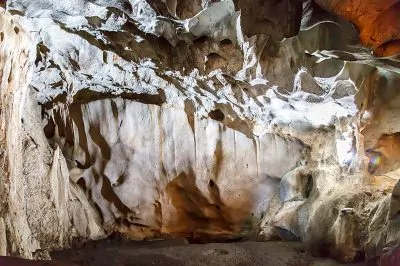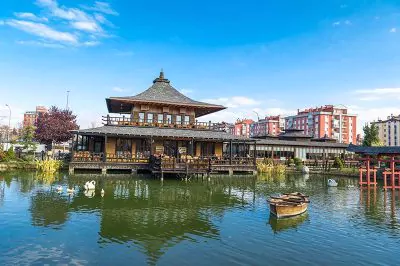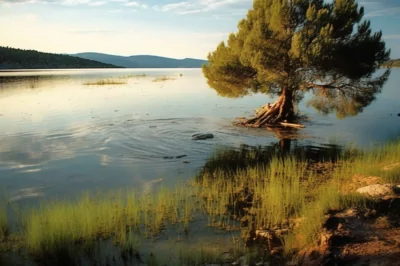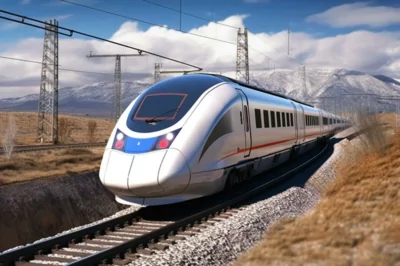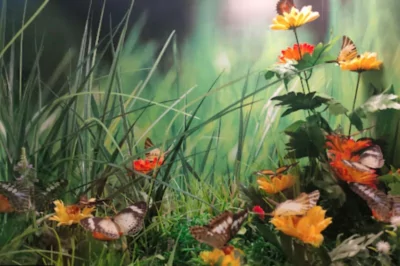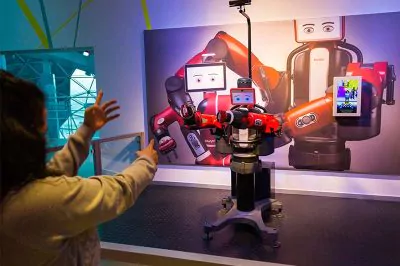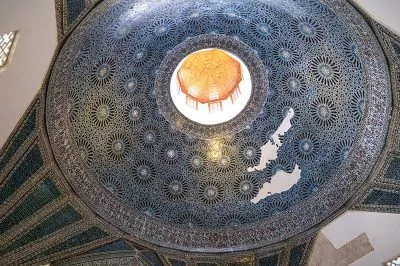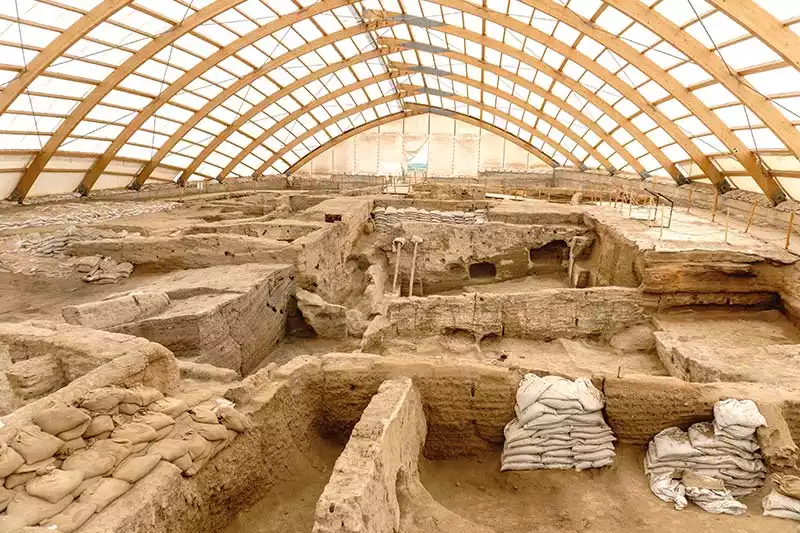
Konya Çatalhöyük: Anadolu’nun İlk Yerleşim Yeri
Çatalhöyük’ün en önemli özelliği dünyanın en eski yerleşimlerinden biri olması. Çatalhöyük (kimi kaynaklarda Çatalhüyük), günümüzden 9000 yıl önce yaşam olduğu kanıtlanmış tarihi bir yerleşim yeri.
Çatalhöyük, bir köy yaşamından öte kentleşmeye doğru evrilen bir değere sahip. Belki de daha önce görülmemiş bir şekilde 8000 kişinin bir arada yaşayabildiği bir yer.
Çatalhöyük tarihi
İlk olarak 1958 yılında James Mellaart tarafından keşfedilmiş ve 1965 yılına kadar kazı çalışmaları sürdürülmüş. Daha sonra Mellaart’ın adının kötüye çıkmasıyla kazılar durdurulmuş.
1993 yılında Prof. Dr. Ian Hodder başkanlığında kazılar, Türkiye, Yunanistan, İngiltere ve Amerika ortaklığıyla devam etmiş. Hodder’in emekli olmasıyla kazı başkanlığı görevini en son Doç. Dr. Çiler Çilingirlioğlu ele aldı.
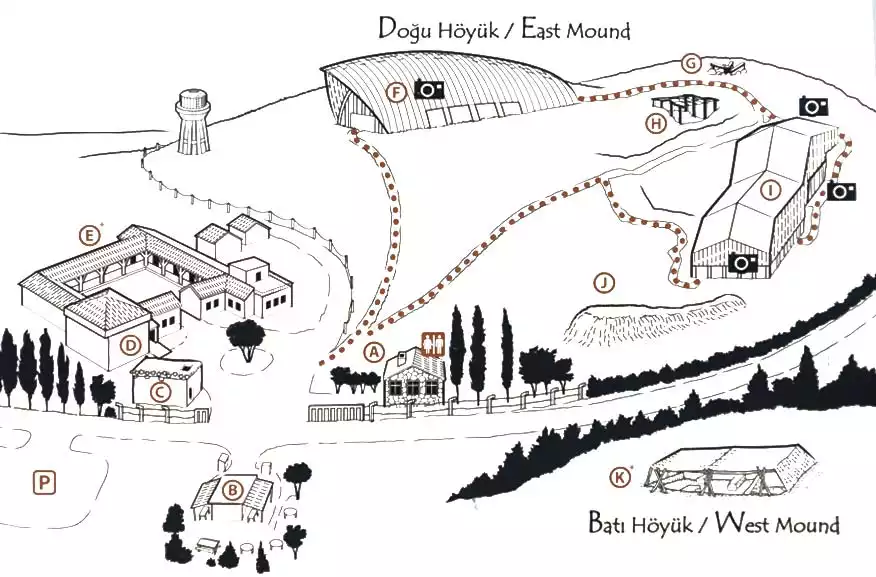
2012 yılında Dünya Miras Listesi‘ne dahil edilen Çatalhöyük’te aslında iki höyük bulunuyor. İsmini de iki tepenin çatala benzetilmesinden almış ve bu höyükler Çatalhöyük (Doğu) ile Çatalhöyük (Batı) olarak isimlendirilmişler.
Batı höyüğü ziyarete kapalı. Doğu’da ise Doğu ve Güney olarak adlandırılan iki farklı yer gezilebiliyor. Neolitik ve Kalkolitik Çağ’ı kapsayan bu höyüklerin altında koca bir tarih yatıyor. Günümüzde yapılan kazı çalışmaları ile bir kısmı açılabilmiş olsa da, hala büyük bir kısmı toprak altında.
Bundan 10-20 yıl sonra ortaya çıkacak olan manzaranın çok daha muhteşem olacağına eminim. Daha şimdiki kazılarda ortaya çıkan sonuç bile insanı heyecanlandıracak düzeyde çünkü.
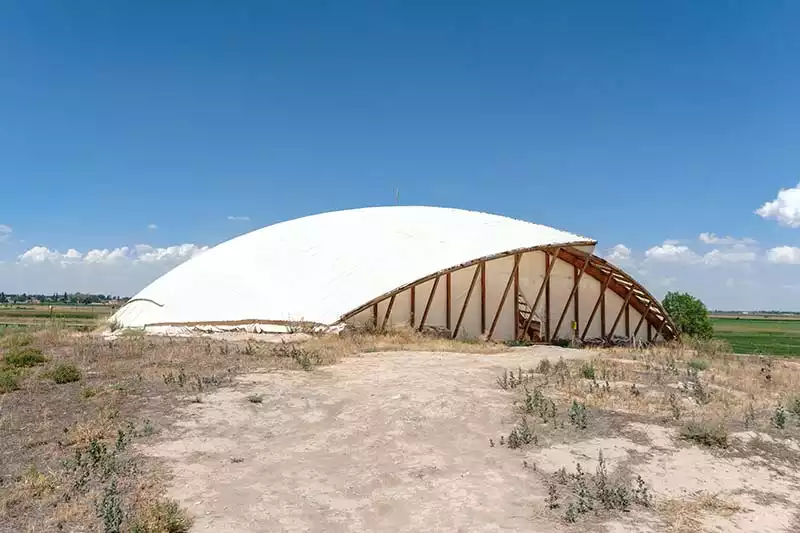

Gelelim Çatalhöyük’teki tarihi evlere. Yapılan kazılar sonucu anlaşıldığı üzere evler, ihtiyaç halinde diğer evlerin hemen yanına, arada boşluk olmayacak biçimde inşa edilmiş. Şehirde sokak kavramı yokmuş.
Çoğu evin duvarı birbirine bitişik olmasına rağmen, bir avlu mantığı varmış ve bu avluya açılan dar geçitler bulunuyormuş. Dar geçitler, çöp alanı ve tuvalet pisliklerinin atıldığı alanlar olarak kullanılıyormuş.
Avluların etrafına inşa edilen evler mahalleleleri oluşturmuş. Bu mahalleler ise kenti ortaya çıkarmış. Peki evler birbiriyle bitişikse bu evlere girişler nasıl sağlanıyordu? Kerpiç, ağaç ve kamış vasıtasıyla inşa edilen bu evler arası ulaşım tahmin edebileceğiniz gibi damlardan sağlanıyormuş.
Çok ilginçtir ki, eve girmek isteyenler evin damındaki kapıları kullanıyormuş. Damdan evin odasına merdivenle iniyorlarmış. Evlerin odaları da hiç büyük değil, gayet mütevazı bir şekilde her şey.
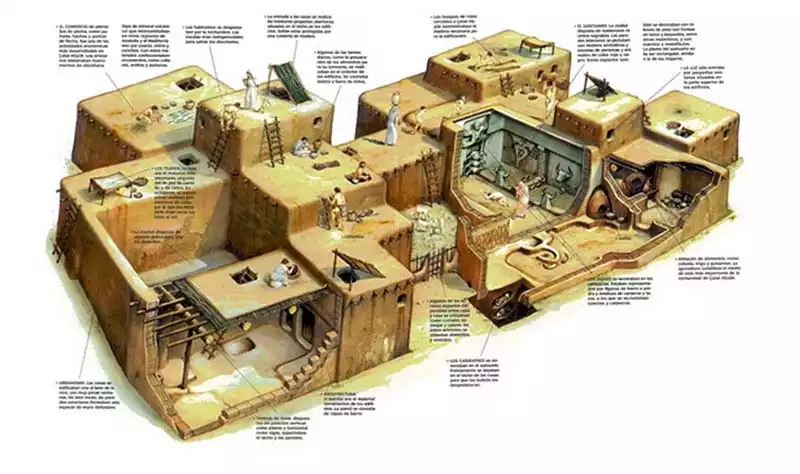
Evlerin tamamı tek katlı ve genellikle biri oda, biri ise küçük bir depo alanı olarak kullanılan iki odadan oluşuyormuş. Evler sadece tavandan ışık aldığı için beyaza boyanır ve odaların en aydınlık olacak şekilde olması sağlanırmış.
Evler, doğa şartlarına dayanıklı olmadığından düzenli olarak bakımı yapılır, boyanır ve hatta yıkılır, yeniden inşa edilirmiş. Yeniden inşa edilen evler, eski arsanın üzerine yapıldığından zamanla, bugün gördüğümüz höyükler oluşmuş.
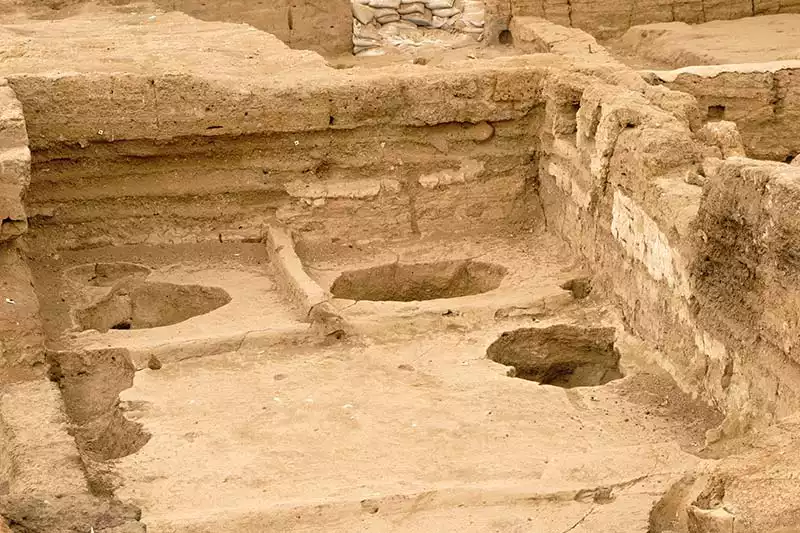
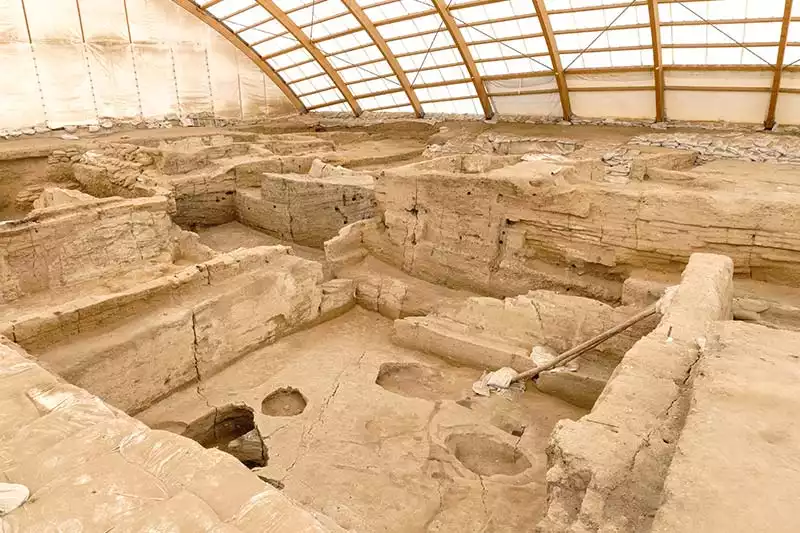
Evler dekoratif anlamda da kendinden söz ettiriyor, çünkü paleolitik çağda insanların mağaralara yaptığı resimlere benzer niteliklte, kırmızı boya ile odaların duvarları süsleniyormuş.
Daha çok avcılık üzerine yapılan resimler, sonraki yüzyıllarda daha dekoratif desenlere, mesela kuş motifleri gibi geometrik desenlere bırakmış yerini.
Bu durumda burada sanattan da bahsedebiliyoruz. Yapılan eserlerde insan yüzü resmedilmiş çanaklara, bukranium denilen ve gücü temsil eden boğa başı figürlerine rastlanıyor.
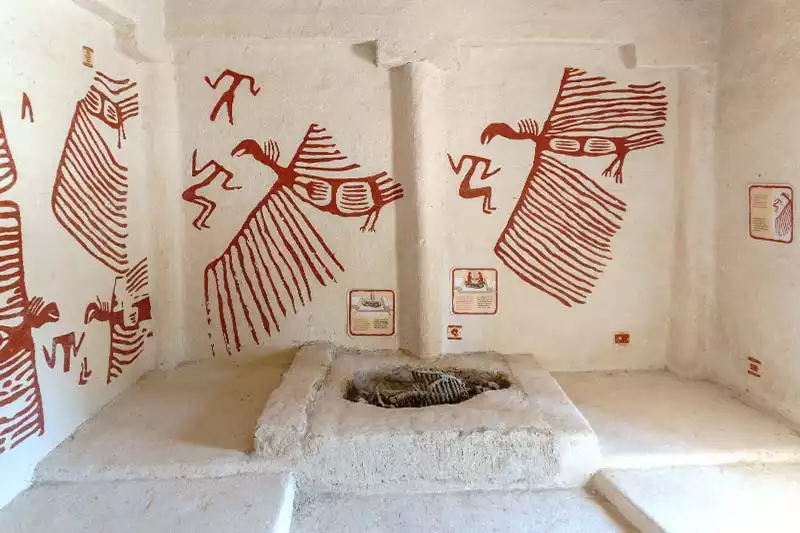
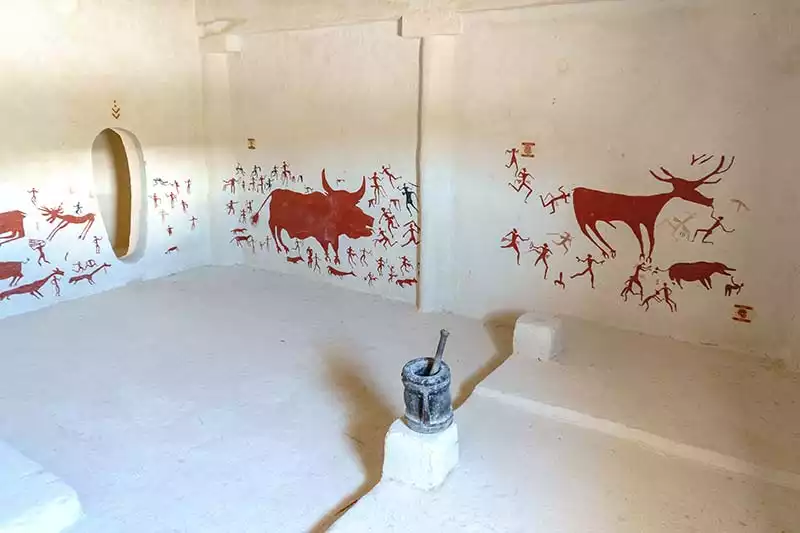
Duvar resimlerinden biri, yaklaşık 7000 yıl önce patlayan Hasan Dağı, şehrin yukarıdan görünümü ile birlikte resmedilmiş.
Yanardağın patlaması, dönemin insanları tarafından duvara resmedilmiş. Dünyanın ilk haritası ve dünyanın ilk manzara resmi olarak kabul edilen bu resim günümüzde Ankara Anadolu Medeniyetleri Müzesi’nde sergileniyor.
Volkanik patlamaların burada yaşayan insanlara da fazladan şöyle bir etkisi olmuş Kullandıkları bıçak gibi malzemeleri volkan lavlarının sertleşmesi sonucu oluşan obsidyenden yapmışlar. Bu türdeki koyu renkli taşları parlatarak ayna görevi gören malzemeler de üretmişler.
Yine Ankara Anadolu Medeniyetler Müzesi’nde bulunan ve Çatalhöyük’ten çıkarılan eserlerden biri topraktan yapılmış toprak tanrısı Kybele figürü.
Kadınlar, verimi, bereketi, doğurganlığı semboilze ettiği için ana tanrıça heykeli Kybele, kilolu bir şekilde tasvir edilmiş. Bu heykelin Kybele olmasından başka en önemli özelliği eksiksiz olması.
Bu bölgeden çıkarılan eserlerin tamamının sergilendiği bir müze olmadığı için çevredeki müzelere dağıtılmış eserler. Anadolu Medeniyetler Müzesi ve Konya Arkeoloji Müzesi, Çatalhöyük’ten çıkarılıp en çok eserin sergilendiği iki müze.
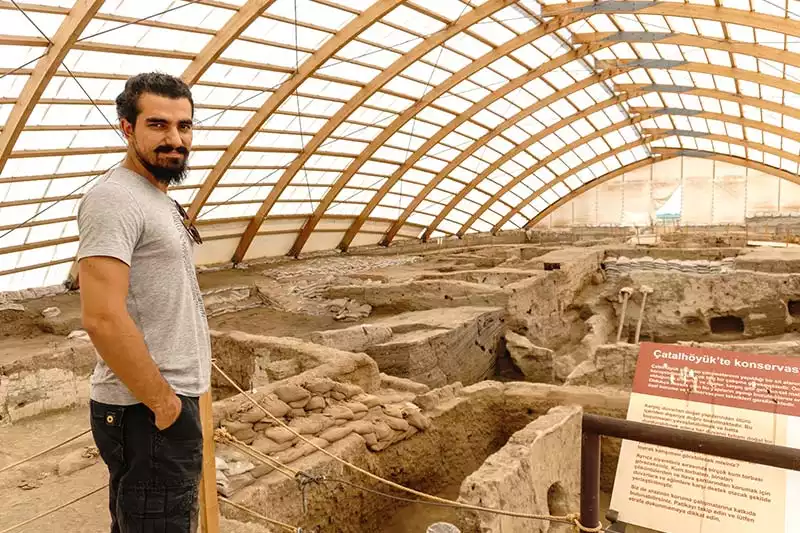
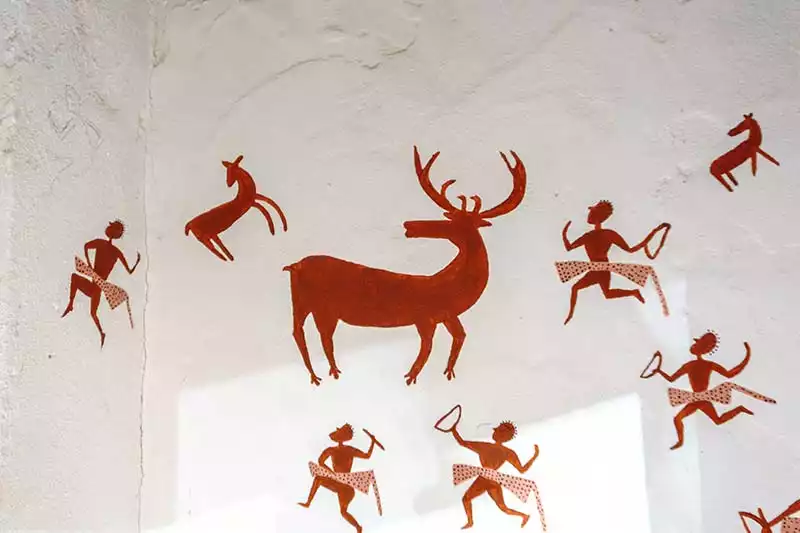
Dünyanın bilinen ilk toplu yerleşim alanlarından biri olan Çatalhöyük Neolitik Kenti’nde ölüler için ayrı bir alan yok, aslında burada ölülerle yaşam var. Peki bu ne demek? Ölen insanlar, evlerinin tabanına gömülüyor demek.
Çatalhöyük’ü ziyaret ettiğinizde evlerin zeminlerinde göreceğiniz çukur alanlar, ölülerin gömüldüğü yerler. Ölüler, evin içindeki bu küçük kuyulara yerleştiriliyormuş. Yapılan kazılar sonucu dünyanın dokunmuş ilk kumaş parçası da bu mezarlardaki bir bebeğe sarılı halde bulunmuş.
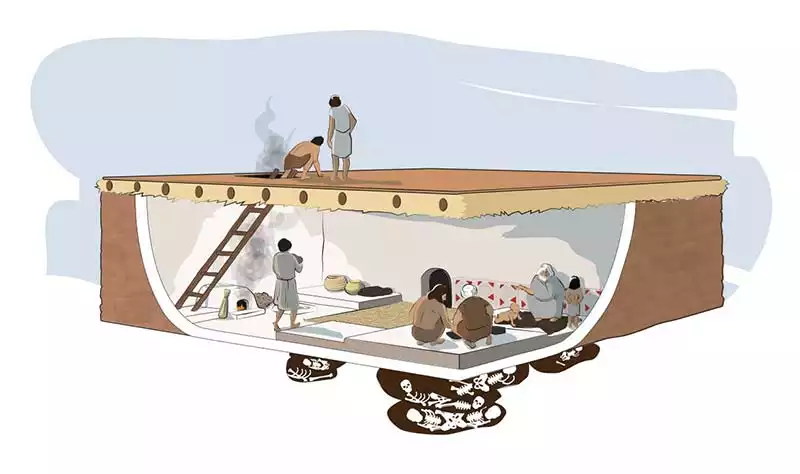
Çatalhöyük’e girdiğinizde bekçi amca size neler yapacağınızı ve rotanızı anlatıyor. Höyükleri dolaşmadan önce bilgilendirme evinde Çatalhöyük tarihi ve yaşamı, evlerin özellikleri gibi temel tarih bilgilerini öğrenmenizi tavsiye ederim.
Burası Çatalhöyük Müzesi olarak da geçiyor. İçeride buradan çıkarılmış buluntulara rastlıyorsunuz. Gezi boyunca gayet eğitici, öğretici panolarla karşılaşıyorsunuz.
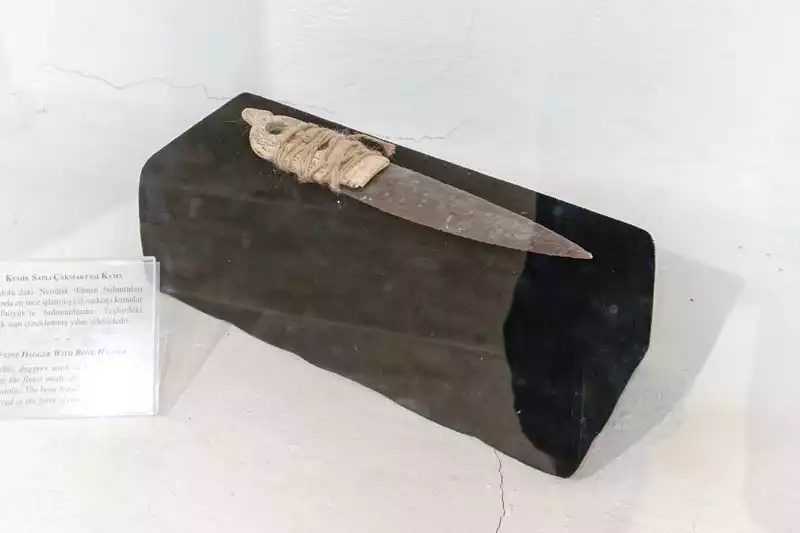
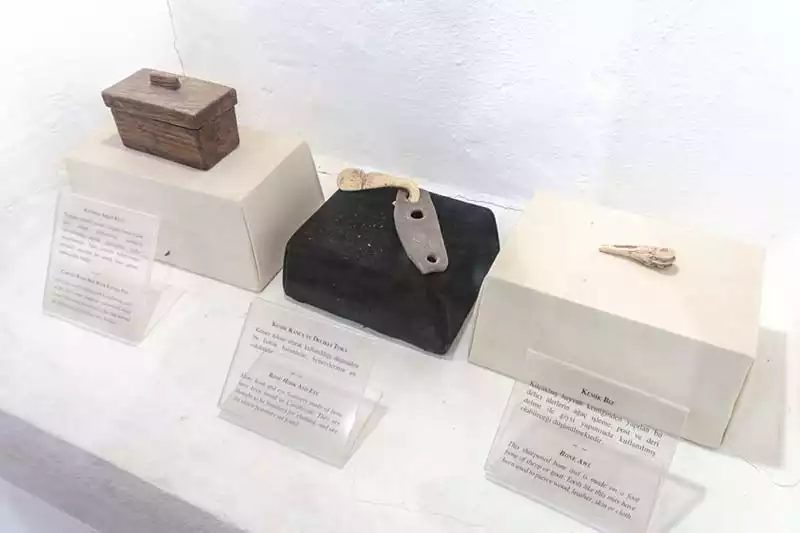
Bilgilendirme evinden çıktıktan sonra Çatalhöyük evlerinin nasıl olduğu ve yaşam alanları konusunda fikir sahibi olabilmeniz için inşa edilen örnek evleri inceliyoruz. Depo alanları ve temel yaşam faaliyetlerinin sürdürüldüğü odalar görülmeye değer.
Çatalhöyük’ten önce hayat nasıldı?
Çatalhöyük’ün ataları Çatalhöyük’ten 70 km uzaklıktaki Karadağ’dan indiği söylenir. Karadağ’da mağaralarda yaşayan ve avlanarak hayatta kalmaya çalışan Karadağlılar, yüzyıllar boyunca aşağı inmenin planlarını yapmışlar ve yine yüzyıllar içinde oluşan birikimle günümüzdeki Çatalhöyük bölgesine inmeyi başarmışlar.
Ev yapabilme yetenekleri ile birlikte burada yaşamlarını sürdürmeye başlamışlar. Ancak av hayvanlarının dağda oluşu, onları hayvanları evcilleştirme yoluna itmiş. Koyun gibi küçük baş hayvanlar evcilleştirilmiş ve etinden, sütünden faydalanmışlar. Ancak büyük baş hayvanlar için hala dışarı çıkıp avlanmaları gerekiyormuş.
Çatalhöyük, insanlık tarihine ışık tutan bir yer olduğu için dünyanın birçok yerinde arkeologların ilgisin çeken bir antik kent ve burası üzerinde çok araştırma yapılıyor. ABD’de bulunan Old Dominion Üniversitesi’nin yaptığı çalışmalardan biri benim çok hoşuma gitti.
Kentin 3 boyutlu modellemesini ve canlandırmasını yaparak kent içinde gezi imkanı sağlamış. Bu simülasyon ile kent için yaşamın nasıl olduğu, avcılığın nasıl yapıldığı ve bu tarihi alanın bulunduğu çevre gibi merak edilen konular bir simülasyonla gerçeklik kazandırılmış.
İşin kötü yanı Türkiye’de bu tarz bir simülasyonu görebileceğimiz bir yerin olmaması. Dünyanın büyük medeniyetlerinden önceki ilk yerleşim yerlerinden biri olan Çatalhöyük, uygulamalı öğrenme ile farklı bir boyut kazanabilir herkes için.
Sulak alanlar insanların yerleşmeyi sevdiği yerlerdir.
Tarih boyunca yerleşim yerleri çoğunluklu bu birikintilerinin, derelerin, nehirlerin kenarları olmuştur. Çatalhöyük insanları da su kenarını tercih etmişti.
Evlerini inşa edebilmeleri için Çarşamba Nehri’nin kıyılarındaki kil kaynağını kullanarak kilden tuğlalar yaptılar ve evlerini bu çamur kil karışımı tuğlalarla ördüler. Nehrin taşıdığı bereketli alüvyonları kullanarak ürünlerini yetiştirebilecek olmaları da bu bölgeye taşınmak için geçerli sebepler arasında.
İşin tarım boyutunda da evcilleştirmeler gözlemlenmiş arkeologlar tarafından. Mesela buğday evcilleştirilerek kullanılmaya başlanmış. Bu, buğdayın ekilebilip biçilebilmesi anlamına geliyor. Ama o dönemde arpa henüz yok piyasada.
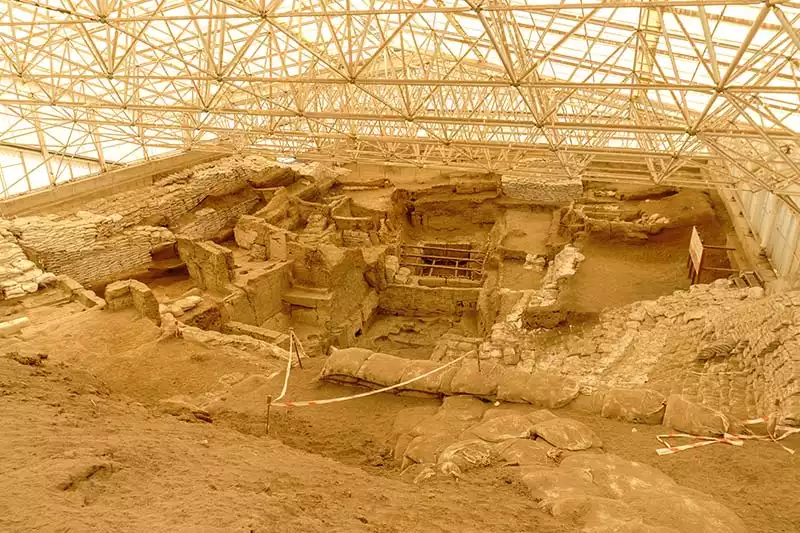
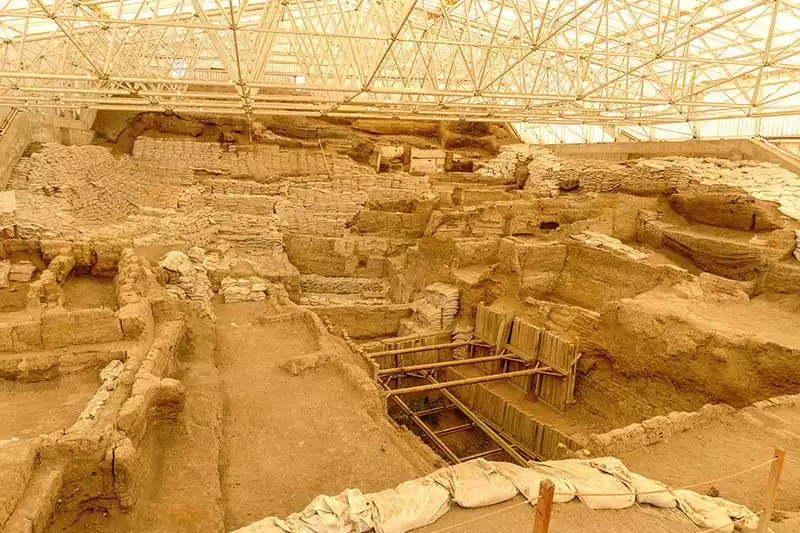
İnsan kafataslarında, sert cisimle vurulmadan dolayı kaynaklanan çatlaklar bulunmuş.
Kendi içlerinde yaşanması olası bazı sorunları ortaya koysa da, başkalarıyla yapılan bir savaştan dolayı ölen olmadığı söyleniyor. İskelet kemikleri incelenerek kişilerin ne sebeple öldükleri anlaşılabiliyor.
Kazılar sırasında arkeologların bulduğu yüzlerce iskelet arasında, savaş nedeniyle ölen hiç kimse de yokmuş. Kemik kesilmesi, başına veya sırtına ok saplanması sonucu hiç kimsenin öldüğü görülmemiş.
Kimsenin kimseden üstün olduğunu gösteren herhangi bir kanıt yok. Herkesin evi aynı boyda, herkesin depo alanı aynı boyda, herkes günlük hayatta kullanacağı kapları, bıçağı kendisi yapar, evlerin duvarlarını kendisi hazırlarmış.
Yapılan her evin duvarlarındaki karışımların farklı olmasından da rahatlıkla anlaşılabiliyor bu durum. Çünkü herkesin bir görevi olsa, ortaya çıkan ürünler de birbirine benzer nitelikte olurdu.
Çatalhöyük nerede ve nasıl gidilir?
Çatalhöyük, Konya sınırlarında yer alan tarihi bir gezi noktası. Konya merkezden 40km’lik (50dk) bir yolculukla ulaşılabiliyor Çatalhöyük’e. Çatalhöyük de Çumra ilçesi sınırlarında ve ilçe merkezine 12km mesafede.
Çatalhöyük’e aracınızla geliyorsanız Çatalhöyük Kazı Alanı girişinde ücretsiz bir otopark var. Aracınızı buraya park edebiliyorsunuz ve giriş ücretsiz.
